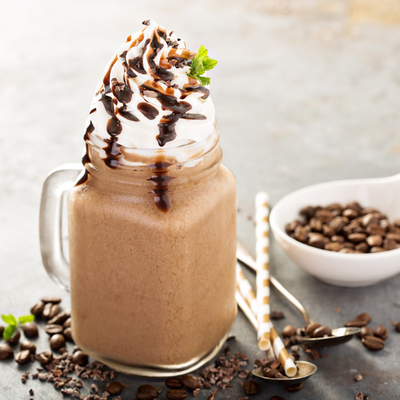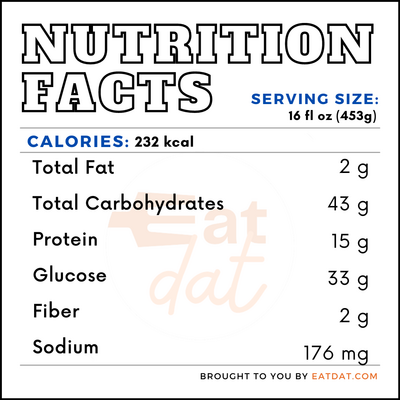
Mocha
What is Mocha?
Mocha, also known as caffè mocha or mochaccino, is a prepared coffee beverage made with chocolate. Similar to a caffè latte, this drink is made with espresso and hot milk, but flavored with cocoa powder and a sweetener such as sugar. Mochas often have a layer of foamy milk on top like a cappuccino and may be served with whipped cream on top, as well.
- In the United States, 26.5 million 60 kilogram bags of coffee were consumed between 2018 and 2019.
- During 2019, 24% of all coffee beverages consumed in the USA were espresso-based beverages.
According to Ranker, the top 10 most popular coffee drinks are:
- Caffè Latte
- Regular Coffee
- Cappuccino
- Iced Coffee
- Mocha
- Macchiato
- Turkish Coffee
- Chai Latte
- Caramel Macchiato
- Café au Lait
Mocha origin
Mocha is closely associated with coffee as this was the name of a city in Yemen that was founded in the 1300s. While the city has a long and rich history, the coffee bean would not come until much later. By the 1500s, Sufi monks in Yemen were cultivating, drinking, and producing coffee for trade. Although coffee was consumed by many Yemenis, it was also controversial for some and even banned for some time.
Around the 1600s, the coffee trade to Europe began and would increase in the following centuries. Many Europeans associated the flavor of the Yemeni coffee with another expensive imported good, chocolate. Yemen’s powerful grip on the coffee trade would last well into the 1700s. The name mocha would long be associated with high-quality coffee before the chocolatey beverage was even crafted.
Nutrition
Consuming coffee with full-fat milk and lots of sugar can make it a very high-calorie beverage. A 16 fl oz serving of mocha with nonfat milk and no whipped cream can have:

While this beverage also contains noticeable amounts of Vitamin A and Iron, caffeinated beverages are not the best way to get vitamins and minerals. Although caffeine does have benefits such as making you more alert and boosting your metabolism, too much caffeine can be detrimental. The FDA notes that 400 milligrams, or four to five cups, of caffeine a day, is too much for a healthy, balanced diet.
Commercial Production
Coffee is produced in over fifty countries around the world. However, the ideal conditions for producing these beans are found along the “The Bean Belt” around the Equator. When it comes to making this, the beverage begins with cocoa powder that is combined with hot water to make a syrup. After that, espresso is poured directly over the chocolate syrup then mixed with a spoon. Finally, hot, frothy milk is added on top of that to complete the caffè mocha.
Uses
To enjoy this drink the right way, you need coffee beans that are fresh and flavorful. Storing your coffee beans properly from the start will help you ensure that they taste great when you want to use them. The National Coffee Association recommends storing your coffee beans in an opaque, airtight container in a cool, dark place. It’s also crucial to buy the correct amount of coffee to ensure that it stays fresh. Therefore, you should only purchase enough coffee to last for two weeks.
Mocha recipes
This chocolatey coffee drink has made its way into many sweet dishes. Here are some popular recipes.
FDA Regulation
While the Food & Drug Administration does not have any regulations which mention this drink specifically, it does regulate coffee. There is a specific procedure that the FDA has approved for how coffee beans can be roasted. Furthermore, this same regulation dictates how imported beans should be sampled, examined, and inspected for insects, mold, and fungus. As this product contains chocolate powder made from cacao, this food product must also be up to the FDA standards. Cocoa products (made from cacao) must have a fat content of less than 22% but not less than 10% by weight.
References
Eschner, Kat. “Your Mocha Is Named After the Birthplace of the Coffee Trade.” Smithsonianmag.com, Smithsonian Magazine, 29 Sept. 2017, www.smithsonianmag.com/smart-news/your-mocha-named-after-birthplace-coffee-trade-180965016/.
Meister, Erin. “The History of Mocha Coffees.” Chowhound.com, Chowhound, 1 Apr. 2019, www.chowhound.com/food-news/214739/history-of-mocha-coffees/.
“Spilling the Beans: How Much Caffeine Is Too Much?” U.S. Food and Drug Administration, FDA, 12 Dec. 2018, www.fda.gov/consumers/consumer-updates/spilling-beans-how-much-caffeine-too-much.
“MPM: V-1. Beverages and Beverage Materials.” U.S. Food and Drug Administration, FDA, 11 Mar. 2017, www.fda.gov/food/laboratory-methods-food/mpm-v-1-beverages-and-beverage-materials.
